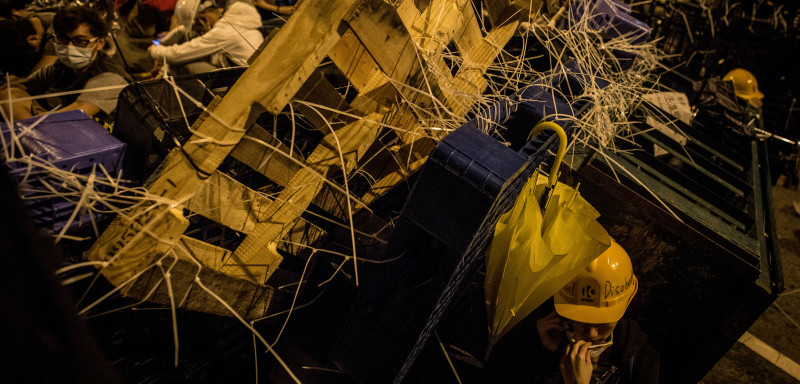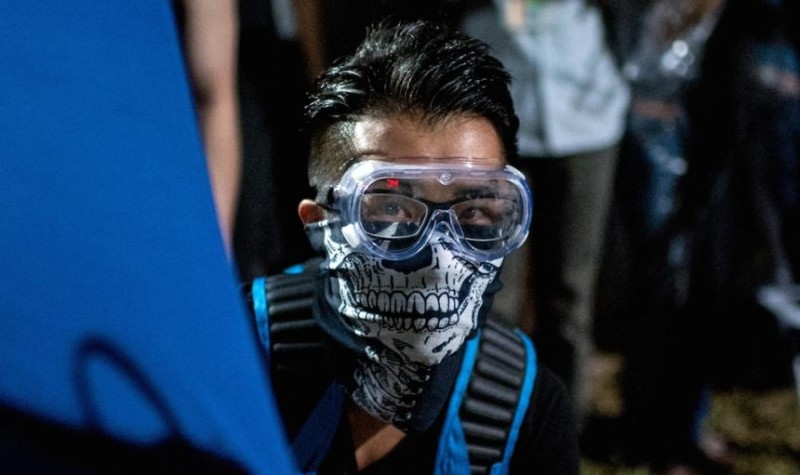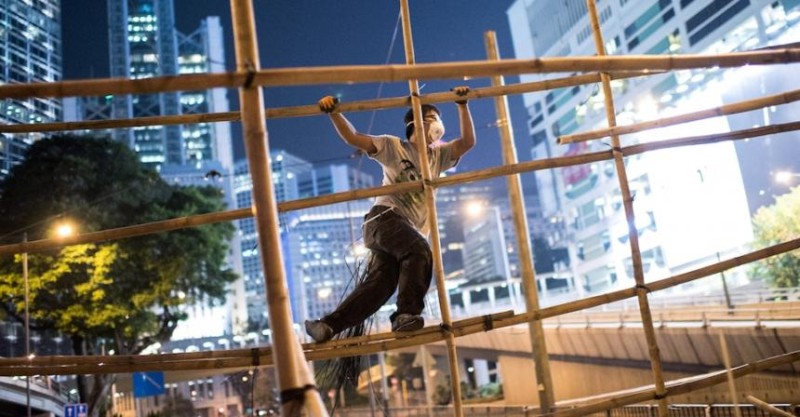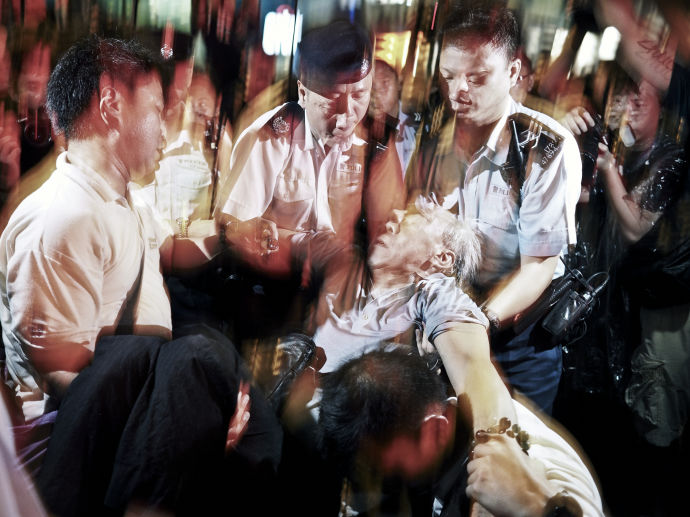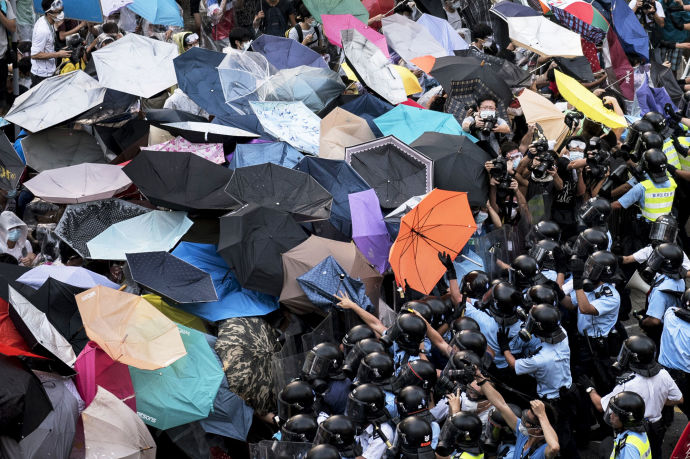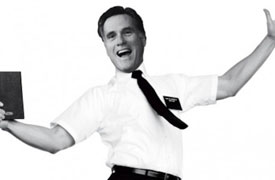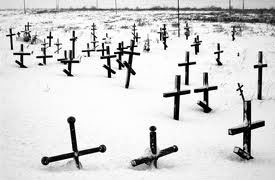Hong Kong Protesters Face the Limits of Their Power
Disorganized and divided, the pro-democracy movement is losing steam.
By Suzanne Sataline
December 2, 2014
Foreign Policy

HONG KONG — By 5:00 a.m., the pre-dawn chill of December’s first day had blown in from Victoria Harbour in central Hong Kong and crept onto the sleeping protesters on Lung Wo Road on the northern lip of Hong Kong Island. Some youth nestled their heads on backpacks, while others shivered under metallic blankets that flapped in the breeze. Sitting on the highway median, protester Heman Cheung, 24, shared a cigarette with two other men. His eyelids heavy, he studied the 20 or so police officers guarding the driveway to the city’s government center. He exhaled slowly. “Perhaps it’s a mistake,” said Cheung.
Eight hours earlier, around 9:00 p.m. on Nov. 30, Cheung and a few hundred other young men and women had tried to surround the city’s government headquarters, a desperate ploy in a fight for open democratic elections in a city that many fret is increasingly resigned to Beijing’s dictates. When the tactic didn’t work, protesters surged onto a major transit route, quickly building barricades from plastic pallets, and waited for the police to chase them off, which they did.
It has been like this for just over two months in Hong Kong, a city of gleaming skyscrapers and staggering wealth where protesters are camping in tents on major commercial streets, trying to get residents to join a crusade for open elections within mainland China’s orbit. The protest initially found wide sympathy in Hong Kong, but since then has been steadily losing support as Hong Kong government officials refuse to talk and residents have tired of the inconvenience created by protest occupations. To keep the movement alive, demonstrators have resorted to increasingly brazen, even theatrical, tactics to convince city officials to pay them heed.
But those gambits, too, have failed to achieve the promise of democracy, and the movement has continued to suffer crippling blows over the past several days. On Dec. 1, a court considered an injunction request that could soon level the occupation camp set on a major highway. Later that day, Joshua Wong, the head of student activist movement Scholarism, started a hunger strike, hoping to prod the city’s government to negotiate. On Dec. 2, Occupy Central with Love and Peace, a group of old-guard democracy advocates, urged students to go home and regroup. All were signs that the two-month-old strike may end in the coming days — perhaps without any concessions from city leaders.
Cheung, a DJ and musician, has been one of several protesters who thinks that the student-led protest has been mismanaged. It had been too tentative and confused, they said, subject to making hasty decisions that crumble from poor planning. The pattern was on display the night of Dec. 1; Cheung said students hadn’t thought about how many people they would need to encircle the government center and hold off the police. And when police quickly cut off walkway access to the complex, the leaders had decided to take Lung Wo, a major east-west transport route that was too vast for the protesters there to hold.
Around 9:00 p.m., two student groups had dispatched supporters to surround government headquarters. Police in riot gear lined up, facing off against teens and young people wearing yellow construction helmets, and clutching wooden and cardboard shields, even a wok with arm straps. After a clattering of batons on umbrellas, raised to shield them from pepper spray, several demonstrators were helped away, clutching bloodied heads. One man hoisted a protester’s slack body over his shoulder.
Volunteer medics swaddled one young man’s head in gauze. The 20-year-old City University student, Kim Ng, said a police officer had pushed aside his black helmet and pounded his skull repeatedly, leaving him with a two-inch gash. “The officers are out of control,” said medic Max Choi, a 31-year-old EMT who said he had been beaten on the neck one night.
A few minutes after 10:00 p.m., a river of protesters streamed onto Lung Wo Road. The move had been tried several times before without success. Students soon erected quick versions of their trademark barricades of metal gates, pallets, and lots of plastic ties. Police hoisted warning signs and asked the students not to swear. “Fuck you!” the crowd cried.
The bravado crumpled by 2:30 a.m. Firing pepper spray, police pushed the crowd into Tamar Park, a speck of green along Victoria Harbour. A few of the 200 protesters who remained hurled bottles as they ran. Blood dribbled down the face of one police superintendent. Cornered by two police cordons, some demonstrators urged the police to join them. “When Hong Kong falls, you will suffer, too,” one man cried. Another called out, “How can you trust the Communists?” and, “You can’t stop us all.”
Police urged the crowd to leave. A few did. The rest lined up along the road as a hesitant rain began. Protesters hoisted umbrellas, shouting, “We want universal suffrage.” Tang Wing-Yu, 20, led the cheer. “Tonight we need to do something. We need to fight,” she said. Around 3:20, students amassed on the road’s eastern end. In minutes, about 200 remaining agitators once again flowed onto the road. The more experienced rebels watched warily, as officers retreated into nearby buses, where they would nap and ready themselves.
As dawn approached, Cheung waited for defeat. “We’re going to lose the road again and about 20 people will be arrested and more people will be beaten,” Cheung predicted. He spoke with a faint French accent that he attributed to hanging out with friends from that country. He learned about outwitting the police, and anticipating their responses, from time spent at the Umbrella Movement’s sister campsite in Mong Kok, where activists sparred several times with officers. Police had cleared that protester area in the bustling commercial hub days earlier, touching off violent standoffs with police. Cheung pursed his lips and exhaled. “It’s police setting a trap,’’ he decided. “We didn’t occupy [the road] at all. We’re just waiting to get arrested.”
Cheung has a deep interest in international politics — he calls it a hobby — and lately he’s been following the Catalan independence push. He said he didn’t expect to enlist in the “whole revolution” movement in Hong Kong. He thought he’d join for a few hours on Sept. 28, the day police lobbed tear gas canisters at the crowd. “Then I saw the students staying with their books. And I felt sort of responsible to stay longer.” Soon he was helping to manage protest supplies at a camp station.
Cheung listened when a fellow protester insisted that if the citizens didn’t fight now, it would be their last chance. Cheung didn’t agree. “A revolution takes 30 years,” he said. “We are just the first generation. It’s like an education for the next generation.”
A little before 5:00 a.m., Cheung grabbed his bullhorn to issue instructions to the crowd. “Even if you’re beaten, I hope you will stay to the last moment,” he told the crowd.
Privately, Cheung sounded less confident. Through the night he had stayed in touch with 17 teammates through an ear bud and walkie-talkie that he kept hidden in his jean jacket. Some of the crew had done some reconnaissance in other neighborhoods and found large police contingents that would quickly shut down any new encampments. Protesters needed to grab small bits of territory and hold them, Cheung said. They hadn’t learned from Oct. 16, he said, when youth made roadblocks from culvert covers, and a huge battery of officers swooped in, chasing down and beating people. Trying to take Lung Wo and the tunnel beneath the park had been a “stupid decision,” he said. “We don’t have the human resources to occupy so much,’’ he said. “Yet people keep trying to expand.” The leaderless movement, he said, “is making this into chaos.”
Still, there he was on roadway’s median before dawn, his voice thin from fatigue, his thin frame aching, about to lead young protesters, many of them students, against men with military training wielding plexiglass shields and pepper spray. Cheung smiled weakly. “You got to have so-called experienced people,’’ he said. “We’re trying to organize, but obviously we don’t have enough people.” He stopped and corrected himself. “We tried. I’m still trying.”
Police regrouped at 6:50 that morning. Dozens of officers lined up on the government drive near the road, wearing riot helmets, shields, and thick gloves. The protesters donned their donated construction helmets, surgical masks, and silicone goggles. One protester was ready to head to work, dressed in a suit and dress shirt. In minutes police with batons barreled out of the government center driveway, encircling the protesters from behind, chasing them off the road, through a park, and past government offices. Many stragglers were clubbed.
Officers pushed them into the encampment on Harcourt Road, storming a quickly erected barricade. Soon, student leaders said what many protesters knew: The Lung Wo operation had been a terrible mistake.
Cheung emerged from the crowd, his skin pale. “We have the right to protest,” he said, staring at the shaken students. The government, he said, had shredded any last thread of a relationship with her people, he said. “Somehow, we thought if we could keep the revolution peaceful, it might lead to some changes,” he said. “I can’t promise this is a peaceful revolution anymore.’’
